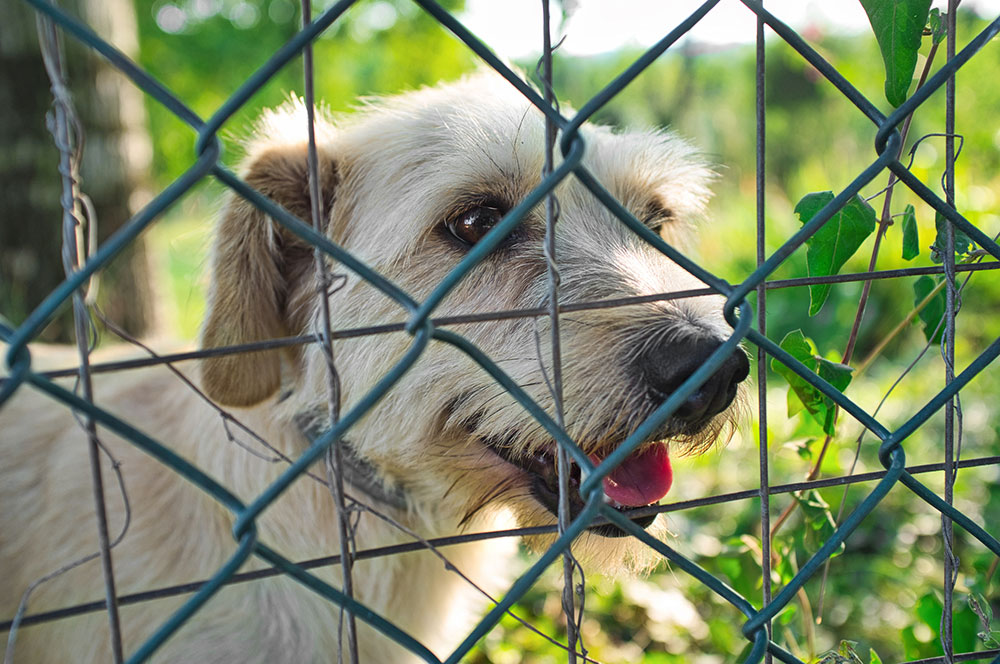Dog attack risk factors
How to help your pet avoid and survive a dog attack.

The University of Adelaide has conducted an Australia-first study into the risks of dogs and cats being attacked by a dog.
The study revealed how commonly dog-on-dog and dog-on-cat attacks occurred and how pet owners could reduce their risk of being involved.
Lead author Dr Christine Heyward said while dog attacks accounted for just 2.5% of veterinary emergencies, they could have lasting impacts on both pets and owners.
“As an emergency veterinarian, I see directly the emotional and financial cost when a pet is attacked by a dog,” Dr Heyward said.
“There have been many studies around dog bites on humans but this is one of the first studies to report the numbers of cases and investigate risk factors relating to being attacked by a dog.”
Almost 92% of dogs that presented with bite injuries survived the attack and was later discharged with given a clean bill of health, however the survival rate for cats was only 46%.
University of Adelaide School of Animal and Veterinary Sciences Senior Lecturer Dr Susan Hazel said cats tended to present with more severe injuries than dogs.
“This is likely due to the smaller size of cats,” Dr Hazel said.
The average cost of emergency veterinary treatment for dog attack victims was about $380 but longer hospital stays were likely to cost their owners thousands of dollars. The study found one serious case where the bill ran to more than $13,000.
Dr Heywood said, while neutered dogs were more likely to be victims of dog attacks, they had a much higher survival rate than non-neutered dogs.
“It’s possible that non-neutered dogs sustained fewer injuries in fights – or were involved in less fights,” she said.
“Neutered dogs had a 76% survival rate when presenting versus only 39% for non-neutered dogs, so they were more likely to present but may have had less severe injuries.”
Pure-bred dogs and those aged between two to seven were less likely to be involved in a dog attack.
Where an animal lived also made a difference. Dogs in high socio-economic areas were more likely to be attacked by an unknown dog, while pets in low socio-economic areas were more likely to be attacked at home.
The Victoria Department of Agriculture estimates 80% of dog attacks would be prevented by properly confining dogs to their property, as a large number of attacks involved a dog escaped from an unsecured yard.
Dr Hazel said owners should exercise ‘due care and responsibility’ if a dog is showing aggressive behaviour by keeping them on a leash when outside the home or in a securely fenced yard.
“If your animal is attacked by a dog, that attack should be reported as soon as possible to your local council, which will then investigate,” she said.
"Through research into dog attacks it is hoped we can design programs to reduce the risk of dog bites – this will be a win-win for both animal and human welfare.”
What to do if your pet is attacked by a dog
- Don’t try to break up the dog fight with your bare hands.
- Tip water from a water bottle or spray their bodies with a hose to shock the dogs into breaking apart.
- Keep calm and swap details with the other pet owner.
- Have your animal seen by a vet immediately as it can be difficult to judge the severity of a wound externally.
- If you have been bitten, visit the hospital immediately as dog bites can contain harmful bacteria.
Source: Animal Emergency Services
Learn more about RACQ Pet Insurance.
Related topics
Things to note
The information in this article has been prepared for general information purposes only and is not intended as legal advice or specific advice to any particular person. Any advice contained in the document is general advice, not intended as legal advice or professional advice and does not take into account any person’s particular circumstances. Before acting on anything based on this advice you should consider its appropriateness to you, having regard to your objectives and needs.
Insurance Products (excluding Travel Insurance) are issued by RACQ Insurance Limited ABN 50 009 704 152 (RACQI) and arranged by its agent, RACQ Distribution Services Pty Ltd (RDS) ABN 35 116 361 650, AFSL 567130 and RDS' authorised representatives (including RACQ Operations Pty Ltd ABN 80 009 663 414, AR No. 234978 (RACQO). Conditions, limits and exclusions apply. RDS and RACQO are in the RACQ group of companies. One of the companies in the RACQ group of companies has a minority shareholding in RACQI.
RDS and RACQO have not taken your personal objectives, circumstances or needs into account when preparing advice regarding insurance products and you will need to consider whether the advice is appropriate for you. Read the Product Disclosure Statement (PDS) and any applicable Supplementary PDS before making a purchase decision on this product. You can also access our Target Market Determinations on this website. RDS receives a commission from RACQI for the policies it arranges. RACQO receives fees paid for services it provides to RDS. Further details about remuneration are available on request prior to purchasing.
Banking and loan products issued by Members Banking Group Limited ABN 83 087 651 054 AFSL/Australian credit licence 241195 trading as RACQ Bank. Terms, conditions, fees, charges and lending policies apply. This is general advice only and may not be right for you. This information does not take your personal objectives, circumstances or needs into account. Read the disclosure documents for your selected product or service, including the Financial Services Guide and the Terms and Conditions, and consider if appropriate for you before deciding.
Except for RACQ Bank, any RACQ entity referred to on this page is not an authorised deposit-taking institution for the purposes of the Banking Act 1959 (Cth). That entity’s obligations do not represent deposits or other liabilities of RACQ Bank. RACQ Bank does not guarantee or otherwise provide assurance in respect of the obligations of that entity, unless noted otherwise.
RACQ Bank subscribes to the Customer Owned Banking Code of Practice which establishes higher standards than the law requires. The Code reflects modern consumer expectations and developments in approaches to issues such as consumer vulnerability, guarantors, and supporting customers through financial hardship. Please read our Customer Owned Banking Code of Practice page for more information.
RACQ Operations Pty Ltd (ABN 80 009 663 414 AR 000234978) and Members Travel Group Pty Ltd (ABN 45 144 538 803 AR 000432492) are acting as an Authorised Representative of the issuer of the insurance, Tokio Marine & Nichido Fire Insurance Co., Ltd. (ABN 80 000 438 291 AFSL 246 548). Any advice set out above is general in nature only, and does not take into account your objectives, financial situation or needs. Before purchasing any travel products, please consider the RACQ Travel Insurance Product Disclosure Statement (PDS) and the Target Market Determinations (TMDs) that apply to these products. Whilst the PDS outlines the Terms and Conditions of these products, the TMDs outline the intended class of customers that comprise the target market for these travel products. This will allow you to consider which products best suit your objectives, financial situation and needs and consider the products appropriateness to your personal circumstances. TMDs also outline matters involving the distribution and the review of these products. The PDS, Supplementary PDS and TMDs for each travel product can be found here.
